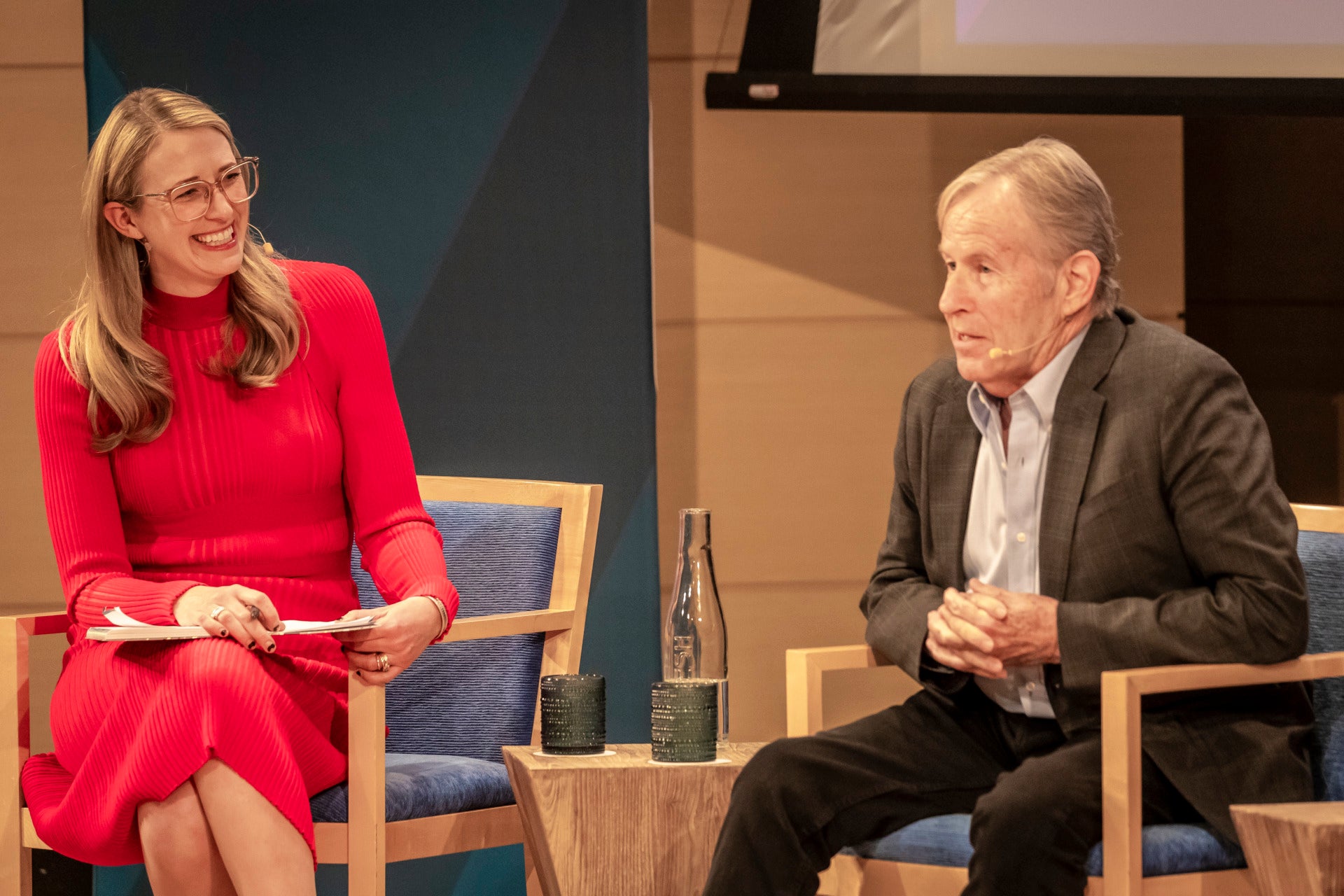Executive Artistic Director of New York Live Arts and Choreographer and Co-founder of the Bill T. Jones/Arnie Zane Dance Company Bill T. Jones joined Director of the Aspen Institute Arts Program and former New York City Ballet principal dancer Damian Woetzel in conversation at New York Live Arts to discuss “the decrepitude of art.”
This inaugural “Bill Chat” is the first in a series of discussions hosted by Jones, and the first in the collaboration between the Aspen Institute and Live Arts. The conversation’s subject refers to a statement by 20th century arts titan (and co-founder of the New York City Ballet) Lincoln Kirstein, commenting on modern art and the work of modern dancer and choreographer Merce Cunningham. The comment was made in an interview published in a book about the dancer written by James Klosty.
The theory of “decrepitude” is defined by Kirstein as “the insistence of personalism, expressionism, idiosyncrasy against the service of the de-selfed self.” This, in so many words, meant that such art ought to be freed of the influences of previous schools of thought and education, embracing an abstraction from expressive narrative and turning more toward introspection and personally defined values.
Jones and Woetzel discussed what this theory means for modern art in its transformative years. Jones referenced the Buddhist philosophy of finding oneself and destroying it in his discussion of originality: “[To me the] culture-at-large was so craven and mediocre that it wouldn’t recognize originality. There’s a whole kind of embattled notion that you had to, in order to be an artist, you had to be yourself and go someplace that is not approved by any academy,” said Jones.
“It’s not about what Bill loves,” Jones continued, in discussing his creative process as the director of Live Arts, which presents a variety of dance in addition to performances by the Bill T. Jones/Arnie Zane Dance Company. “It is about the idea that this should be a place, a preserved domain, where people can do exactly what [Kirstein] said he wanted to do — give people the means and the wherewithal to make.”
The idea that “making” should be a detachment from one’s own personal desires and ego, and instead about the expression of what Woetzel called a “philosophy,” led the two to a discussion of “real dancing” and “good dancing,” and how ignoring both notions can be a key to creating art.
“A good port de bras (use of the arms in dancing) is the death of dancing. … I want to know that you have something to say,” said Woetzel, demonstrating “correct” yet unexpressive arm positions. He offered that nearly all art forms could benefit from the idea that expression is more important than technique — and that such an idea is, perhaps, the reason modern art is what it is. But, referring back to Kirstein, Woetzel stated that holding to a “non-decrepit” philosophy of creativity, as New York City Ballet’s founder and choreographer George Balanchine did, does not mean the art created is not revolutionary, expressive, and timelessly modern.

